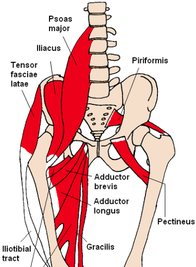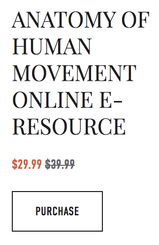- Home
- About Us
- TSPT Academy
- Online Courses
-
Resources
- Newsletter
- Business Minded Sports Physio Podcast
- Day in the Life of a Sports PT
- Residency Corner
-
Special Tests
>
-
Cervical Spine
>
- Alar Ligament Test
- Bakody's Sign
- Cervical Distraction Test
- Cervical Rotation Lateral Flexion Test
- Craniocervical Flexion Test (CCFT)
- Deep Neck Flexor Endurance Test
- Posterior-Anterior Segmental Mobility
- Segmental Mobility
- Sharp-Purser Test
- Spurling's Maneuver
- Transverse Ligament Test
- ULNT - Median
- ULNT - Radial
- ULNT - Ulnar
- Vertebral Artery Test
- Thoracic Spine >
-
Lumbar Spine/Sacroiliac Joint
>
- Active Sit-Up Test
- Alternate Gillet Test
- Crossed Straight Leg Raise Test
- Extensor Endurance Test
- FABER Test
- Fortin's Sign
- Gaenslen Test
- Gillet Test
- Gower's Sign
- Lumbar Quadrant Test
- POSH Test
- Posteroanterior Mobility
- Prone Knee Bend Test
- Prone Instability Test
- Resisted Abduction Test
- Sacral Clearing Test
- Seated Forward Flexion Test
- SIJ Compression/Distraction Test
- Slump Test
- Sphinx Test
- Spine Rotators & Multifidus Test
- Squish Test
- Standing Forward Flexion Test
- Straight Leg Raise Test
- Supine to Long Sit Test
-
Shoulder
>
- Active Compression Test
- Anterior Apprehension
- Biceps Load Test II
- Drop Arm Sign
- External Rotation Lag Sign
- Hawkins-Kennedy Impingement Sign
- Horizontal Adduction Test
- Internal Rotation Lag Sign
- Jobe Test
- Ludington's Test
- Neer Test
- Painful Arc Sign
- Pronated Load Test
- Resisted Supination External Rotation Test
- Speed's Test
- Posterior Apprehension
- Sulcus Sign
- Thoracic Outlet Tests >
- Yergason's Test
- Elbow >
- Wrist/Hand >
- Hip >
- Knee >
- Foot/Ankle >
-
Cervical Spine
>
- I want Financial Freedom
- I want Professional Growth
- I want Clinical Mastery
BackgroundClamshells are one of the most prescribed exercises for individuals with knee pain. This exercise is intended to target the hip abductors, specifically the gluteus medius muscle. EMG studies have found good activation of both the gluteus medius and gluteus maximus muscles during the clamshell. Additionally, the clamshell has been shown to preferentially activate the gluteus medius while minimizing activity in the tensor fascia latae (TFL).
Common CompensationsWhile the clamshell is intended to have good activation of the gluteal muscles, the exercise will only be as effective as the person instructing the movement. In regards to movement patterns, the body always takes the path of least resistance (i.e. the repetitive, facilitated movement pattern). Individuals who will benefit from performing the clamshell exercise likely have difficulty engaging the gluteus medius. Proper cueing is necessary to avoid compensatory motions.
How to PrescribeThe video below contains a 3-part progression for performing the clamshell exercise. When the client can perform 20-30 repetitions without compensation, I progress to the next level of the exercise. Author: Jim Heafner PT, DPT, OCS
Citations:
Sahrmann, S. (2002). Diagnosis and treatment of movement impairment syndromes. St. Louis: Mosby.
19 Comments
7/10/2017 10:16:44 pm
Exercise is the very necessary for everyone because through the exercise increase the life time. Always eating the normal diet daily and drink the milk, natural juice and pure water. Doctor also suggests the every patient for doing the exercise.
Reply
Ali Demirkan
12/27/2017 09:41:09 am
This article has been useful for me, thank you!
Reply
Emily
4/2/2018 02:34:11 pm
How do you do this without overusing your IT band thus hurting your knee?
Reply
Jim
4/2/2018 10:51:27 pm
One strategy I use with people is rolling the hips and pelvis forward. This relatively decreases the mm activation of the TFL muscle and allows the gluteal to work.
Reply
Sara
2/15/2019 06:16:40 pm
Yes! Exactly! I also have found it more useful to roll the top hip more forward... I get annoyed when other PTs and PTAs progress the patient to using a band around the knees because I personally think a band is never needed if the person is doing the exercise correctly. Using a band causes more compensation, TFL/QL activation and does not really work the PGM like they think it does. Ugh! But I seem to be the only one who feels this way!
Reply
Andrea
3/26/2019 09:59:58 am
When I do a clamshell it feels like I’m engaging my anterior hip flexors, maybe the iliopsoas or the sartorius, and the front of my hip definitely feels “shaky” afterwards. Should the front hip flexors be turning on at all?
Reply
Daniel Bankov
9/5/2019 09:57:03 pm
Same here. My iliopsoas really work hard on clamshells... Not sure how to do it so it doesn't get activated so much
Reply
Lee
4/6/2020 12:24:54 am
I hv problem with my right hip. Maybe is hip spine syndrome. Clamshell makes me pain after doing. My whole buttock feels like inflammation and QL seems like spam too. I think i follow all instruction correctly. May i know what is wrong. I dont hv problems on left though
Reply
Tony Rocklin
4/6/2020 07:23:21 am
This is common in many people who have an intra-articular hip problem such as labral tear, OA or FAIS...not everyone of course but many. You might also have done instability related to dysplasia. How old are you and have you had imaging of hip? Go see a PT who specializes in hip pathology.
Reply
GariRae
2/22/2022 07:19:48 pm
Also common in gluteal tendinopathy that can develop from doing too many clamshells. Please note that the writer reported buttock pain, not groin pain. Labrum tear and FAIS are felt in the groin or in the hip, not the buttocks.
GariRae
2/22/2022 07:15:23 pm
Pain in the buttocks that radiates down the lateral thigh is also an sign of gluteal tendinopathy, often involving the gluteus medius and the minimus. I developed GT after being prescribed 60 clamshells per side, 5 days per week. Some PTs think of clamshells as innocuous exercises, but the rule of 24-48 hours rest should still be followed. GT is an insidious, life-altering condition for an active person who also needs pain-free sleep. All PTs need to seriously monitor their clamshell assignments.
Reply
Question
5/9/2020 12:46:48 am
I 've started this exercise and I think my piriformis muscle hurts so much like it was tearing, it was incredibly painful, could you please advise why ?
Reply
Renee
10/18/2020 05:46:50 pm
My PT has asked me to do 15 reps of these with resistance band, 2 rounds. Every time I do them, my hip is popping, and it is bringing on a burning sensation, to the point I am in tears. It is awful. I'm not sure what is happening, but definitely will stop using the resistance band until I can speak with her at our next appointment.
Reply
Nikki
2/17/2021 05:45:44 pm
When I do this exercise my knees often feel stiff and sore afterwards. What could I be doing wrong?
Reply
Kami
12/15/2021 01:55:59 pm
Why would my adductor feel sore on one side only? This is happening when i use a band.
Reply
2/20/2022 05:44:15 am
We at Learn Quran USA provide you and your kids with a great opportunity to Learn Quran Online with Tajweed at home conveniently. Book Your Free Trials Now.
Reply
12/27/2022 12:57:52 pm
Such a fantastic information. This is honestly very useful for bloggers
Reply
12/27/2022 01:00:39 pm
Useful submit! I really want this sort of article.. that is very beneficial for me.
Reply
Leave a Reply. |
Dr. Brian Schwabe's NEW Book in partner with PaleoHacks!
Learn residency-level content on our
Insider Access pages We value quality PT education & CEU's. Click the MedBridge logo below for TSPT savings!Archives
July 2019
Categories
All
|









 RSS Feed
RSS Feed